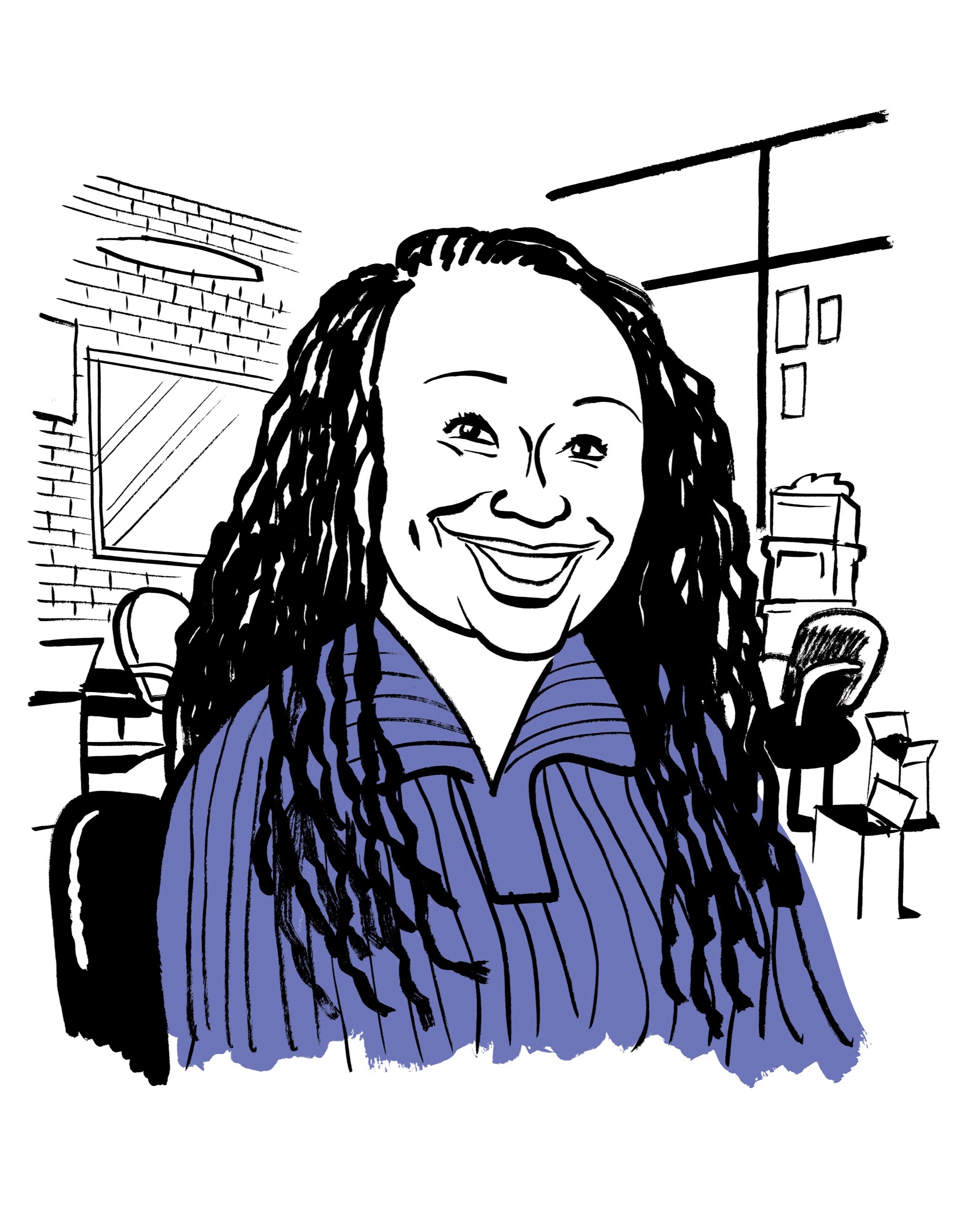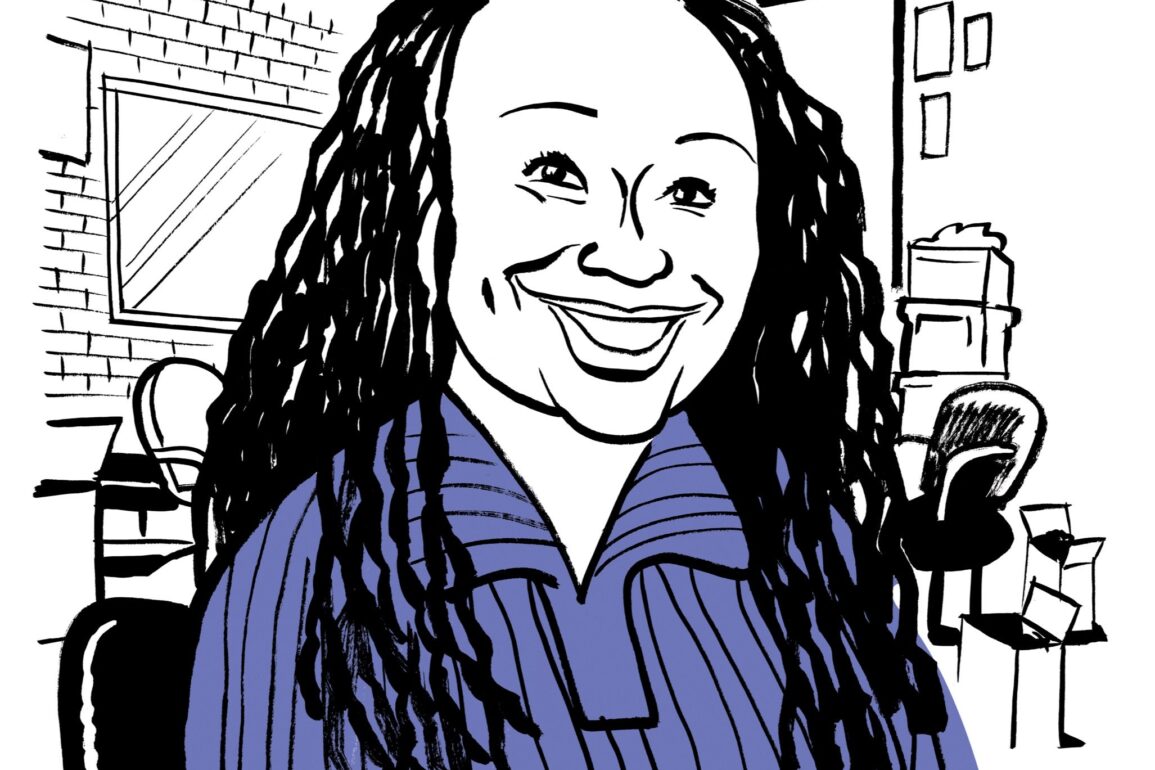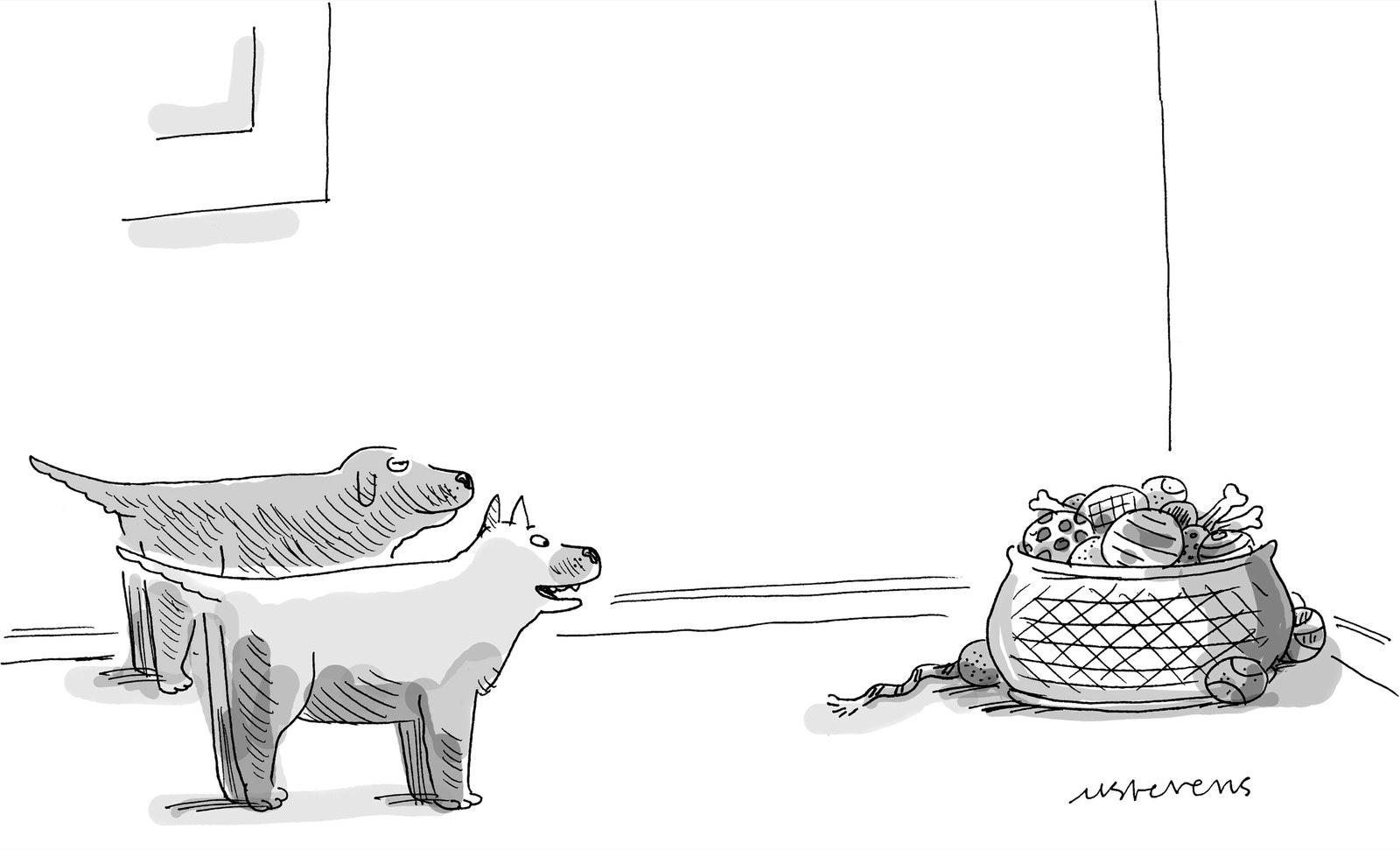Jocelyn Bioh Gets Her Hair Done in Harlem

The playwright Jocelyn Bioh lives around the block from the Good Year African Hair Braiding Salon, on 125th Street and Morningside Avenue, in Harlem. On a recent Wednesday morning, she sat in Nafi Namoro’s chair to get a new protective style. Her play “Jaja’s African Hair Braiding” was beginning previews at the Samuel J. Friedman Theatre, and she’d decided on boho mermaid locks for the occasion. “That is a crochet style, which I don’t get super often, but I was in the mood,” Bioh said. Namoro parted Bioh’s hair with a pintail comb and intertwined strands of Kanekalon braiding hair until she’d made a perfect cornrow.
Bioh, who is forty, wore a hunter-green sweater dress and an easy smile. She grew up in Washington Heights, the daughter of Ghanaian immigrants who had high aspirations for their children. “Doctor, lawyer, or schoolteacher, engineer, honorable mention maybe to government official,” she said. “Those are the big professions that were drilled as markers of American success.” Instead, Bioh took dance classes at a local community center, hoping to make it on the sketch show “In Living Color.” “I thought I was going to be a Fly Girl,” she said. “Then, of course, the show went off the air, and I had to pivot.” Dance led to musical theatre and writing plays, including “Nollywood Dreams” and “School Girls; or, the African Mean Girls Play.”
“Oh, there’s Whitney!” she said, looking up. Whitney White, one of Bioh’s collaborators, had just walked in. Bioh turned to Namoro and said, “This is the one who directed the show, Nafi.”
“Next time, make sure my name’s in the show,” Namoro said, maneuvering a crochet hook to loop wavy dreadlocks around the cornrows.
“She said we should have named the play ‘Nafi’s African Hair Braiding,’ ” Bioh told White. “I said, ‘Next time.’ ”
White laughed. She’d taken the A train from Brooklyn to compare notes with Bioh about the first performance. She wore all black and carried a Vuitton Speedy bag. Her natural hair was twisted and pinned back. “You make me wanna get crochet now,” she said.
Did the two have early hair inspirations? “Brandy,” Bioh said. “It was all about Brandy.”
“She was a brown-skinned girl with the braids,” White said. “That was the time when studies were coming out where we couldn’t wear braids to work. She was in school, she had a life—that was a game changer.” She went on, “Do you remember when Vivica A. Fox had the micros? And Queen Latifah would do the braids? That was kind of a renaissance of Blackness.”
In a distressing bit of circularity, two weeks before the previews for “Jaja” started, a high school near Houston made the news when it suspended a junior named Darryl George for wearing dreadlocks in a bun to school. (The school said the hair style violated the district’s dress code because it was too long, and recently transferred George to a disciplinary program.) “It’s abhorrent,” Bioh said. “They’re worried about hair, when there’s school shootings.”
The pair began discussing their go-to protective styles. “I like a medium-long ombré box braid,” White said.
“I like large box braids, in No. 1, always,” Bioh said, referring to a shade on the Kanekalon color chart. “Jet black, midnight. They want me to experiment with color. I will not do it.”
“I don’t want to ruin it, but there’s a Beyoncé moment in the show,” White said. “It’s iconic. And there was an extra wig, and we draped it over Ms. Jocelyn, and she looked amazing.”
“No, thank you,” Bioh said.
The play takes place in the course of twelve hours at a Harlem salon. (For complicated styles, braiders can spend eight hours working on a customer’s hair.) White and Bioh had all the actors learn how to braid. “We had a really incredible hair-braiding consultant. Hair by Susy is her official name,” Bioh said. “She is probably the first hair braider to be credited on a Broadway show.”
“We had a whole room next to our rehearsal room reserved for hair styling, braiding, practice, wig creation,” White said.
Namoro was almost done; Bioh had been there for two hours. The salon hummed with hair dryers. A few women in traditional dress spoke French. The owners of Good Year African Hair Braiding are from neighboring countries, Guinea and Côte d’Ivoire. Bioh said that, for the play, she decided that the stylists would be from Nigeria, Sierra Leone, and all over West Africa.
“That’s the part that’s probably most fictional,” Bioh said. “A lot of times when I go to hair-braiding shops, they’re from the same region or speak the same version of Wolof. But I really wanted to reflect all the hair braiders that I’ve had from various countries. It helps support why everybody in the play is speaking English, because they don’t all speak the same language. I think that’s important for audiences to know, especially those who think Africa is one big country.” ♦
This post was originally published on this site be sure to check out more of their content.










